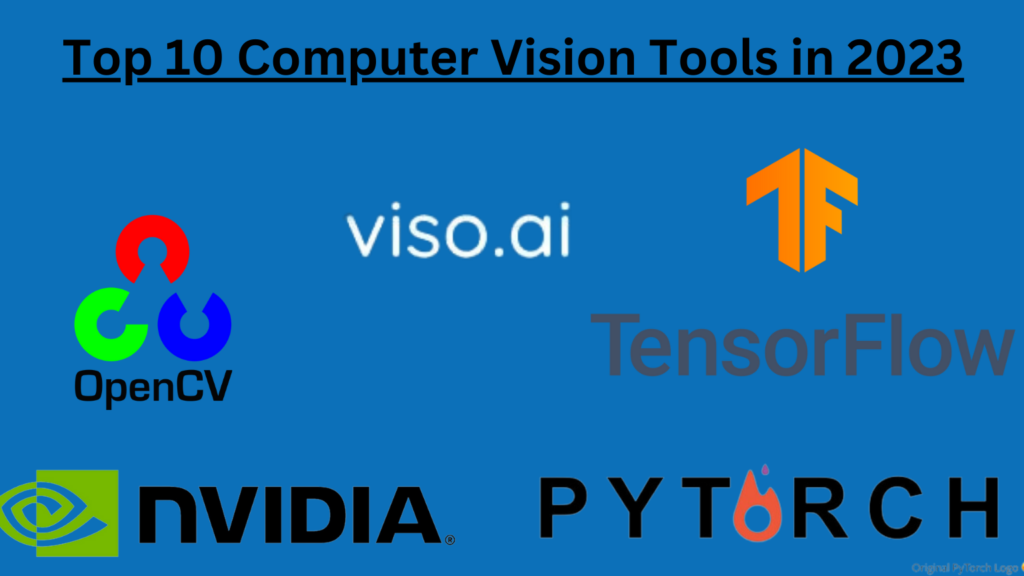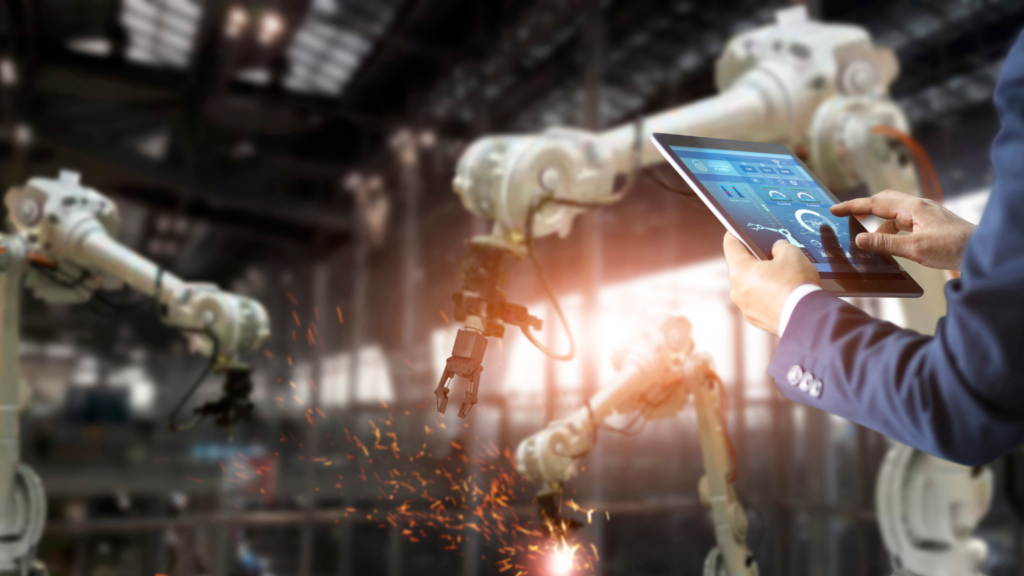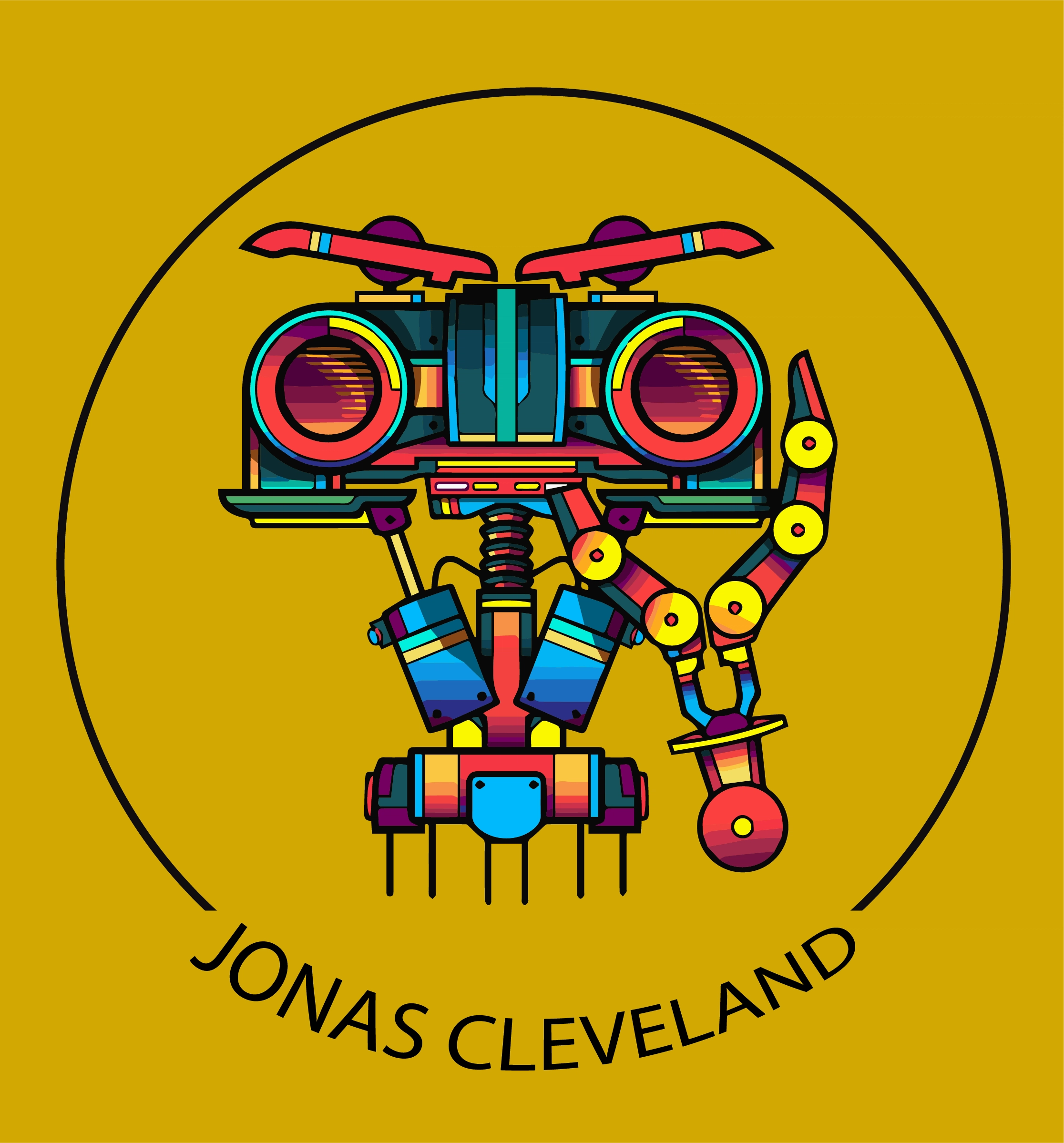Top 10 Computer Vision Tools in 2023

Computer vision is a rapidly growing field that enables computers and systems to extract useful information from digital photos, videos, and other visual inputs. With the help of computer vision tools, machines can perceive, observe, and understand the world around them, much like humans do. In this article, we will explore the top 10 computer vision tools available today and how they can benefit various industries. What is Computer Vision? Computer vision is a field of artificial intelligence that focuses on enabling machines to interpret and understand visual data from the world around them. It involves the use of algorithms and mathematical models to analyze and interpret images and videos. Computer vision has a wide range of applications, from object recognition and tracking to facial recognition and autonomous vehicles. Top 10 Computer Vision Tools There are many computer vision tools and platforms available today that can help developers and data scientists build and deploy computer vision applications. Some of the most popular tools and platforms include: 1. OpenCV OpenCV is a software library for machine learning and computer vision. It offers over 2,500 algorithms for applications like face recognition, object detection, and image segmentation. This tool finds extensive usage in sectors like healthcare, retail, and manufacturing. 2. TensorFlow An open-source machine learning platform by Google, TensorFlow is heralded for the construction and training of deep neural networks, especially for image classification and object detection. Its user-friendliness and flexibility make it a preferred tool among developers and data scientists. 3. PyTorch Another well-received open-source platform for machine learning, PyTorch is celebrated for its ease of use. It is heavily employed in fields such as healthcare, retail, and manufacturing for various computer vision applications. 4. CVAT This web-based tool facilitates the annotation of images and videos. CVAT’s user-friendly interface proves indispensable for the creation of computer vision datasets. Industries like healthcare and retail frequently adopt this tool. 5. Viso Suite Viso Suite presents an all-encompassing platform for computer vision. Its software stack integrates CVAT, OpenCV, OpenVINO, TensorFlow, and PyTorch, positioning it as a staple in sectors such as healthcare and manufacturing. 6. Kili Technology’s Video Annotation Tool Kili’s tool accelerates the creation of top-notch datasets from video files. Its diverse labeling capabilities simplify video annotations for computer vision tasks. Industries like healthcare and retail commonly use this tool. 7. Amazon Rekognition A cloud service from Amazon, Rekognition enhances applications with image and video analysis features. Its capabilities span object detection, facial analysis, and text recognition. It is frequently used in industries such as healthcare and retail. 8. Microsoft Azure Computer Vision A part of Microsoft’s Azure services, this cloud-based tool offers features like image analysis and object detection. It is crafted for easy usage and integrates seamlessly with other Azure services. Industries like healthcare and retail frequently employ this tool. 9. Google Cloud Vision API This cloud-based service by Google encompasses image analysis, facial recognition, and object detection features. Designed for easy integration with other Google Cloud services, it is a favorite in sectors like healthcare and retail. 10. NVIDIA DeepStream SDK NVIDIA’s SDK empowers developers to craft and roll out intelligent video analytics applications. It encompasses features like object detection, tracking, and classification, making it a go-to tool in industries such as healthcare and retail. What is Object Tracking in Computer Vision? A Detailed View Applications of Computer Vision Tools Computer vision tools have a wide range of applications across various industries, including healthcare, retail, manufacturing, and transportation. Here are some examples of how computer vision tools are being used today: Healthcare: Computer vision tools are being used in healthcare to improve patient outcomes and reduce costs. For example, computer vision can be used to analyze medical images such as X-rays and MRIs to detect diseases and abnormalities. It can also be used to monitor patients in real-time, allowing doctors to detect changes in a patient’s condition and respond quickly. Retail: Computer vision tools are being used in retail to improve the customer experience and increase sales. For example, computer vision can be used to analyze customer behavior in stores, such as how long they spend in certain areas and what products they look at. This information can be used to optimize store layouts and product placement, leading to increased sales. Manufacturing: Computer vision tools are being used in manufacturing to improve quality control and increase efficiency. For example, computer vision can be used to inspect products on the production line, detecting defects and ensuring that products meet quality standards. It can also be used to monitor equipment and predict when maintenance is needed , reducing downtime and increasing productivity. Transportation: Computer vision tools are being used in transportation to improve safety and efficiency. For example, computer vision can be used in autonomous vehicles to detect obstacles and navigate roads safely. It can also be used in traffic management systems to monitor traffic flow and optimize traffic signals, reducing congestion and improving travel times. Challenges and Future of Computer Vision While computer vision has made significant progress in recent years, there are still many challenges that need to be addressed. One of the biggest challenges is the need for large amounts of high-quality data to train computer vision models. Another challenge is the need for more efficient algorithms that can process visual data in real-time. Despite these challenges, the future of computer vision looks bright. With the continued development of new tools and platforms, as well as advances in machine learning and artificial intelligence, we can expect to see even more exciting applications of computer vision in the years to come. Best Computer Vision Startups in 2023 You Need to Know Conclusion In conclusion, computer vision tools are essential for building and deploying powerful computer vision applications that can improve efficiency, reduce costs, and enhance the customer experience. The top 10 computer vision tools we have discussed in this article are OpenCV, TensorFlow, PyTorch, CVAT, Viso Suite, Kili Technology’s Video Annotation Tool, Amazon Rekognition, Microsoft Azure Computer Vision, Google Cloud
Computer Vision Applications in Manufacturing

Computer vision (CV) is a subfield of artificial intelligence that has been rapidly developing in recent years, thanks to the rise of deep learning. CV techniques have been applied to various manufacturing industries since the early 1970s, including food, pharmaceutical, automotive, aerospace, railway, semiconductor, electronic component, plastic, rubber, paper, and forestry-related fields. In this article, we will explore the various of computer vision applications in manufacturing industry, highlighting its potential to improve efficiency, accuracy, and safety. Computer Vision Applications in Manufacturing Automated Visual Inspection One of the most significant applications of computer vision in manufacturing is vision-based industrial inspection. This technique involves using cameras and image processing algorithms to detect defects in products during the manufacturing process. Vision-based inspection systems can detect defects that are difficult or impossible to detect with the naked eye, such as cracks, scratches, and other surface imperfections. This technology can help manufacturers identify and correct defects early in the production process, reducing waste and improving product quality. For example, in the automotive industry, computer vision is used to inspect car bodies for defects during the manufacturing process. Cameras are placed at various points along the assembly line, and images of the car body are analyzed in real-time to detect any defects. This technology can help manufacturers identify and correct defects early in the production process, reducing waste and improving product quality. Artificial Intelligence In Computer Vision Quality Control and Assurance Computer vision can also be used for quality control in manufacturing. By analyzing images of products, computer vision algorithms can detect defects and deviations from the desired specifications. This technology can help manufacturers ensure that their products meet the required quality standards, reducing the risk of product recalls and improving customer satisfaction. For example, in the food industry, computer vision is used to inspect food products for defects, such as foreign objects or discoloration. Cameras are placed at various points along the production line, and images of the food products are analyzed in real-time to detect any defects. This technology can help manufacturers ensure that their products are safe and of high quality. Process Monitoring and Optimization Computer vision can also be used for process monitoring and optimization in manufacturing. By analyzing images of manufacturing processes, computer vision algorithms can detect anomalies and deviations from the expected process. This technology can help manufacturers identify and correct issues in real-time, reducing downtime and improving efficiency. For example, in the semiconductor industry, computer vision is used to monitor the manufacturing process of computer chips. Cameras are placed at various points along the production line, and images of the chips are analyzed in real-time to detect any defects or anomalies. This technology can help manufacturers optimize the manufacturing process and improve the yield of high-quality chips. Robotic Automation Computer vision can also be used to improve robotic automation in manufacturing. By using cameras and image processing algorithms, robots can detect and manipulate objects with greater accuracy and precision. This technology can help manufacturers automate repetitive and dangerous tasks, reducing the risk of workplace injuries and improving efficiency. For example, in the electronics industry, computer vision is used to guide robots in the assembly of electronic components. Cameras are placed above the assembly line, and images of the components are analyzed in real-time to guide the robots in the assembly process. This technology can help manufacturers automate the assembly process and improve the accuracy and speed of production. Vector Search in Computer Vision: Enhancing Search Experience with High-Dimensional Vectors Challenges and Limitations While computer vision has many potential applications in manufacturing, there are also some challenges and limitations to consider. Conclusion In conclusion, computer vision has many potential applications in the manufacturing industry, from automated visual inspection to robotic automation. By using cameras and image processing algorithms, manufacturers can improve efficiency, accuracy, and safety in their production processes. While there are some challenges and limitations to consider, the benefits of computer vision in manufacturing are significant. As technology continues to advance, we can expect to see even more innovative applications of computer vision in the manufacturing industry. FAQs References
